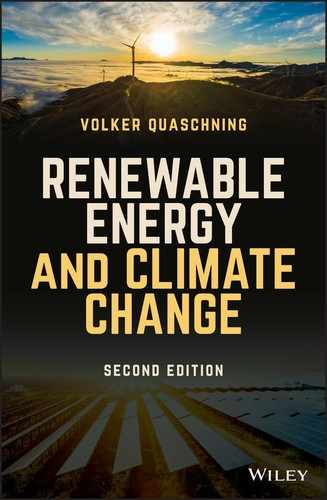Book Description
Provides clear analysis on the development potentials and practical realization of solar, wind, wave, and geothermal renewable energy technologies
Presented as a clear introduction to the topics of climate protection and renewable energy, this book demonstrates the correlations between use of energy, energy prices, and climate change. It evaluates and analyzes the current world situation (drawing on examples given from countries across the globe), whilst also giving essential and practical guidance on ‘personal’ climate protection. Each major type of renewable energy system is covered in detail and with an easy-to-read approach, making it an ideal manual for planning and realizing climate protection and renewable energy systems, while also being an informative textbook for those studying renewable energy and environment and sustainability courses.
Renewable Energy and Climate Change, 2nd Edition starts by examining our hunger for energy—how much we need, how much we use, and how much it is costing us. It then looks at the state of climate change today and the causes. Following that, the book focuses on how we waste and save energy. The remaining chapters look at the many alternative sources of energy generation, like photovoltaics, solar thermal systems and power plants, wind power systems, hydropower plants, and geothermal power. The book also delves into current state of biomass energy and the hydrogen and fuel cell industry. It finishes with a look at the future of the subject, shining a light on some positive examples of sustainable energy.
- Clear overview on each state-of-the-art technology in alternative energy production
- Presents correlations between use of energy and energy prices, and climate change
- Provides guidance on what the reader can do to reduce their own energy waste
- Full-color figures and photographs throughout, data diagrams and simple calculations and results, and text boxes that highlight important information
- International examples of renewable energy in action
Renewable Energy and Climate Change, 2nd Edition is an excellent text for students and professionals studying or working on renewable energy, or environmental and sustainability alternatives. It will also benefit planners, operators, financers, and consultants in those fields.
